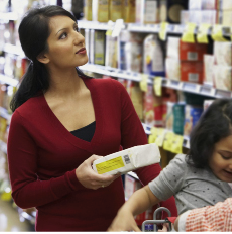MeadWestvaco Corporation (MWV), a global leader in packaging and packaging solutions, launched in February its Packaging Matters: the company’s third annual study of the impact of packaging on product satisfaction and consumer purchasing behaviour. From examining the attitudes of consumers in five markets (Brazil, China, Germany, France and the United States) across 11 FMCG product categories such as food, beverage, and personal care, the survey found that packaging is strongly linked to purchase intent and brand loyalty.
But while most correspondents believe new packaging is headed in the right direction, there are significant gaps between the importance of product packaging and how brands are meeting consumer needs. And what consumers want are targeted innovations in functionality and safety, said MWV.
“Consumers in this year’s study indicated that brands are moving in the right direction in terms of how packaging is evolving,” said Pete Durette, senior vice-president, MWV.
“That being said, consumers continue to want more from packaging, especially when it comes to function and safety.”
Packaging Matters data show a strong correlation between packaging satisfaction and the consumer behaviours brands want. Consumers who are completely satisfied with packaging engage in sought-after purchase behaviours more often, purchasing products more often, buying both in-store and online, and trying new products because of the packaging.
Packaging Matters found that 31% of global consumers see packaging as very or extremely important to their overall satisfaction with consumer products.
But packaging is most important to major brands’ key targets: frequent shoppers, urban shoppers with high spending power, and brand-loyal shoppers. Thirty-seven percent of consumers have tried a product because packaging caught their eye or purchased a product again because of packaging functionality.
In geographic distribution, packaging is most important to consumers in developing markets (China and Brazil), where trust in the supply chain is not as strong as in developed markets (France, Germany and the United States).
Across the 11 categories surveyed, packaging has the greatest impact on purchase decisions for refrigerated/frozen food, beauty/personal care/fragrance, and take-out food/beverage. More than one third of consumers say packaging is very or extremely impactful to their purchase intent in these categories.
In terms of retail channels, packaging is considered more important to in-store purchases (57%) than online purchases (43%), but that gap is closer than some might think.
China was the only country in which most consumers (65%) say packaging is more important for online purchases. Those who see packaging as very or extremely important to their satisfaction are also more likely to increase the frequency they shop online in the future.
“For those of us in the industry who see the impact of packaging every day, we are pleased to confirm that consumers consider packaging important to their product satisfaction,” said Tracy Doherty, senior director, marketing and innovation, MWV.
“The categories where consumers report packaging as having the biggest impact on their purchasing behaviour, however, also have the lowest levels of satisfaction. The question is: how can we close that gap? We have a responsibility to leverage the data and figure out how brands can do even better.”
Packaging Matters data show 83% of global consumers are at least moderately satisfied with packaging, but only a tenth is completely satisfied, leaving an opportunity for brands.
Compared with last year, satisfaction increased 3% in the United States and dipped 2% in China, where safety has been a major concern. But consumers are optimistic on packaging: more than 77% believe brands are headed in the right direction when it comes to new trends in packaging.
“Packaging is one of the many tools available to a brand manager. Our data confirms that it is also one of the most effective,” said Durette.
“Consumers who are completely satisfied with packaging are more likely to buy consumer products more often and have a favourable view of the brand. To stay ahead of the curve in this rapidly evolving and competitive global FMCG marketplace, brands have a real opportunity to differentiate their products and impact purchase behaviour by increasing consumer satisfaction with packaging.”



